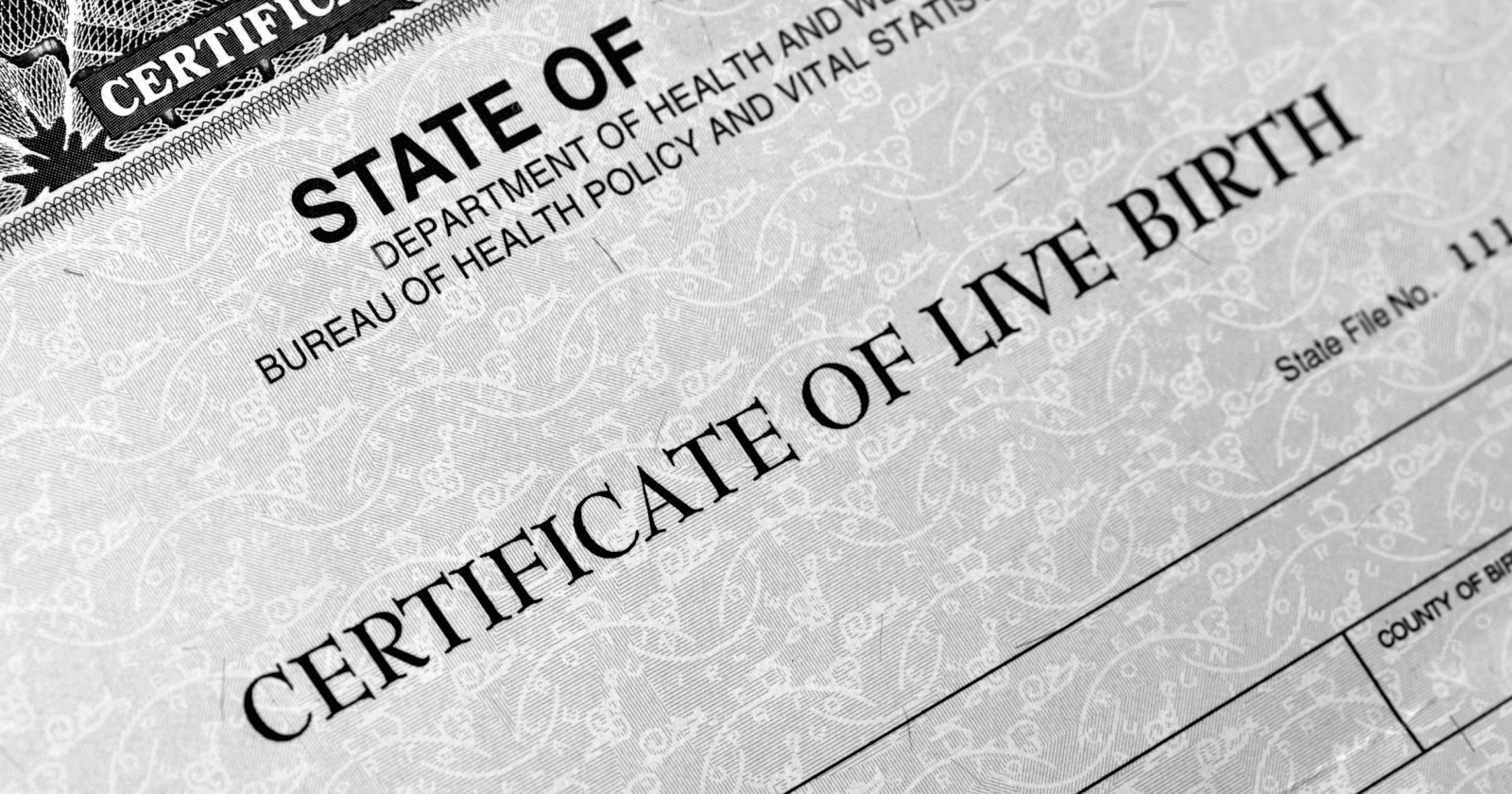A birth certificate is a crucial legal document that serves as an individual’s primary proof of identity and age. However, there are times when a name change on the birth certificate becomes necessary, whether due to a legal name change, spelling correction, or clerical error. Changing a name on a birth certificate involves a specific process that varies by region but typically includes documentation, a legal affidavit, and, in some cases, a court order.
This guide provides a clear, step-by-step outline on how to change a name on a birth certificate, ensuring that your document accurately reflects your legal identity.
How to Change Name in Birth Certificate
Changing a name on a birth certificate is often necessary for several reasons, such as correcting a misspelling, adding a missing name, or reflecting a name change due to adoption or other legal processes. Since the birth certificate is a legal document, it’s essential to follow your region’s specified procedures to ensure that the amendment is recognized.
Reasons for Changing a Name on a Birth Certificate
Before diving into the process, it’s helpful to understand some common reasons for name changes on birth certificates. These can include:
- Spelling Mistakes: Often, clerical errors at the time of registration can result in incorrect names on the birth certificate.
- Legal Name Change: If an individual undergoes a name change through marriage, adoption, or personal choice, they may wish to update their birth certificate to reflect this.
- Adding Missing Details: Sometimes, missing middle names or initials may need to be added.
- Gender Reassignment: For individuals who undergo gender reassignment, updating the name and gender on their birth certificate may be desired.
Steps to Change Name on a Birth Certificate
While the specific requirements vary based on jurisdiction, the following steps are generally applicable. Be sure to check with your local or state office for precise details, as requirements can vary.
Step 1: Gather Required Documents
To begin the process, gather all necessary documents. Typically, you’ll need:
- Existing Birth Certificate: The original or a certified copy of the birth certificate to be amended.
- Identification Proof: Government-issued identification, such as a passport or driver’s license, for verification.
- Supporting Documents: Court orders, marriage certificates, or name change certificates, depending on the reason for the name change.
- Affidavit for Name Change: A notarized affidavit stating the reason for the name change, signed and dated by the applicant.
Step 2: Complete the Name Change Application Form
Most regions require a formal application to request a name change on a birth certificate. This form is usually available through your state or local vital records office or online.
- Details to Include: The application form will typically ask for personal details, including the individual’s name as it currently appears on the birth certificate, the desired name change, and the reason for the change.
- Signature and Notarization: Ensure that the form is signed in the presence of a notary, as some offices require notarized applications to process the name change.
Step 3: Submit a Court Order (If Required)
In some cases, particularly for significant changes or those made after reaching adulthood, a court order may be required to authorize the name change.
- Obtaining a Court Order: To get a court order, you may need to file a petition for a name change at your local courthouse. This process may involve a hearing where the judge evaluates your reason for the name change.
- Legal Assistance: If the process feels overwhelming, consulting a legal professional can be helpful to ensure that all necessary steps are followed.
Step 4: Pay the Applicable Fees
A fee is typically required when processing a name change request. Fees vary depending on the region and the type of amendment being made.
- Standard Fees: Fees for name changes can range from $10 to $50 in the U.S., but prices vary widely based on jurisdiction.
- Expedited Processing: If you need the amendment processed quickly, inquire about expedited services, which may carry additional costs.
Step 5: Submit the Application and Await Processing
Once all documents, fees, and forms are prepared, submit them to the appropriate office, such as the Vital Records Office or Department of Health.
- Mail or In-Person Submission: Depending on the office’s preferences, you may be able to submit your application in person or by mail.
- Processing Time: The time required to process a name change can vary, with typical processing times ranging from two weeks to several months. Expedited services, if available, may reduce this wait.
Step 6: Receive the Amended Birth Certificate
Once your application is approved, the vital records office will issue an amended birth certificate reflecting the name change.
- Certified Copy: It’s advisable to request a certified copy of the amended birth certificate for official purposes, as this version is often required when submitting identification or legal documents.
Important Considerations for Name Changes on Birth Certificates
- Minors’ Name Changes: If the name change involves a minor, additional documents, such as parental consent or a court order, may be required.
- Legal Implications: Keep in mind that changing a name on a birth certificate can have legal implications for other documents, such as passports, school records, and social security cards.
- State-Specific Requirements: Each state or region has its specific regulations and forms, so be sure to follow your local procedures closely to avoid delays or denials.
Additional Scenarios Requiring a Name Change on a Birth Certificate
Certain situations may require additional steps or unique forms of documentation to complete a name change on a birth certificate. Here are a few examples:
- Adoption-Related Name Changes: For adopted children, the adoptive parents may request a name change on the birth certificate. This often requires an adoption decree and documentation from the court approving the change.
- Gender Reassignment: Individuals who have undergone gender reassignment may wish to update both their name and gender marker on their birth certificate. In these cases, additional documentation, such as medical certification, may be required.
- Deceased Individuals: In some jurisdictions, changing the name on the birth certificate of a deceased person may be possible, usually requiring additional legal authorization.
FAQs
1. How long does it take to change a name on a birth certificate?
Ans – Processing times vary by region, generally ranging from a few weeks to a few months. Expedited options may be available.
2. Can I change my child’s name on their birth certificate?
Ans – Yes, with the appropriate documentation and parental consent, parents can request a name change for a minor.
3. Is a court order always required for a name change on a birth certificate?
Ans – Not always. Minor spelling corrections or adding a missing name may not require a court order, but major changes often do.
4. Are there fees associated with changing a name on a birth certificate?
Ans – Yes, most regions charge a processing fee, typically between $10 and $50, depending on the jurisdiction.
5. Can a name change on a birth certificate affect other documents?
Ans – Yes, once the birth certificate is amended, other documents like passports, IDs, and social security records may need updates to reflect the new name.
6. What should I do if my birth certificate has a minor typo in the name?
Ans – Minor typos can usually be corrected without a court order. Contact your local vital records office to learn about the specific process for minor corrections.
Conclusion
Changing a name on a birth certificate may seem complex, but with the right documentation and understanding of your region’s requirements, the process is straightforward. Whether you’re correcting a minor error, updating due to a legal name change, or adjusting for other personal reasons, following the correct steps ensures that your birth certificate accurately reflects your legal identity. This updated document not only supports identity verification but also paves the way for consistency across official records.
By following the outlined steps, you can confidently navigate the process and secure an accurate, up-to-date birth certificate.



